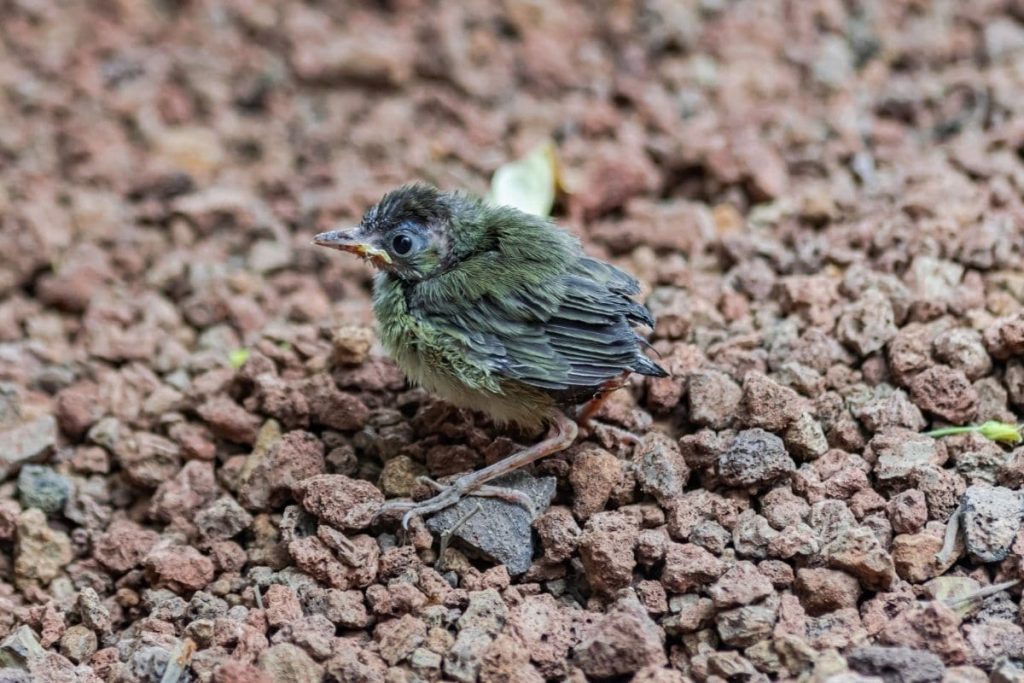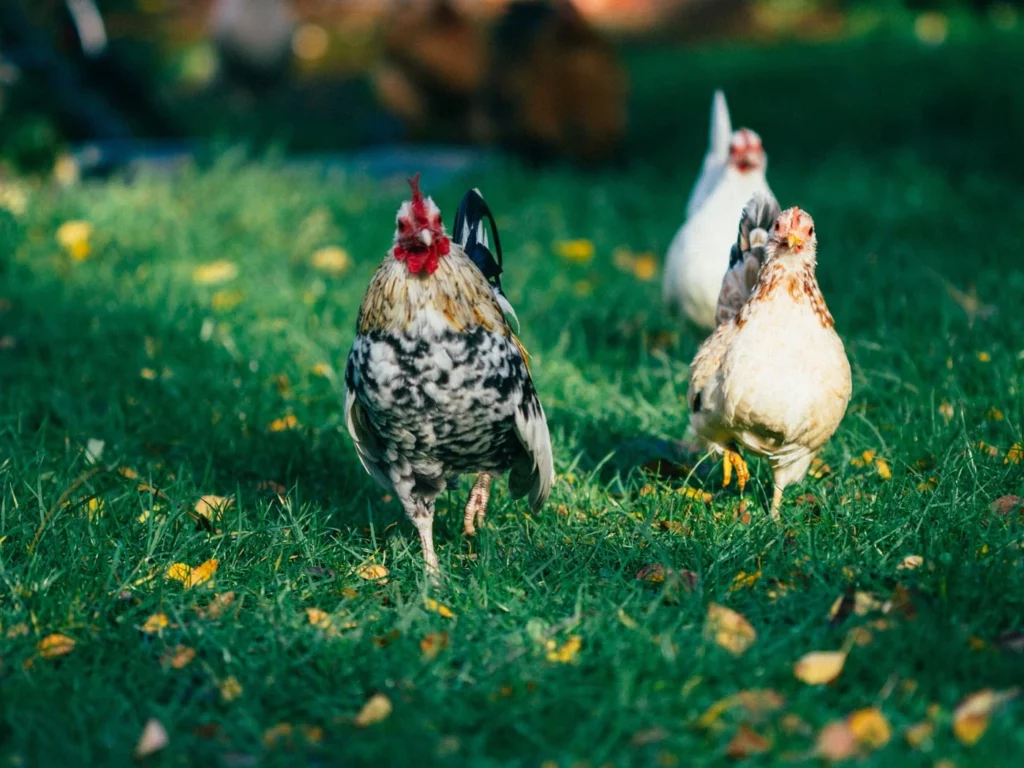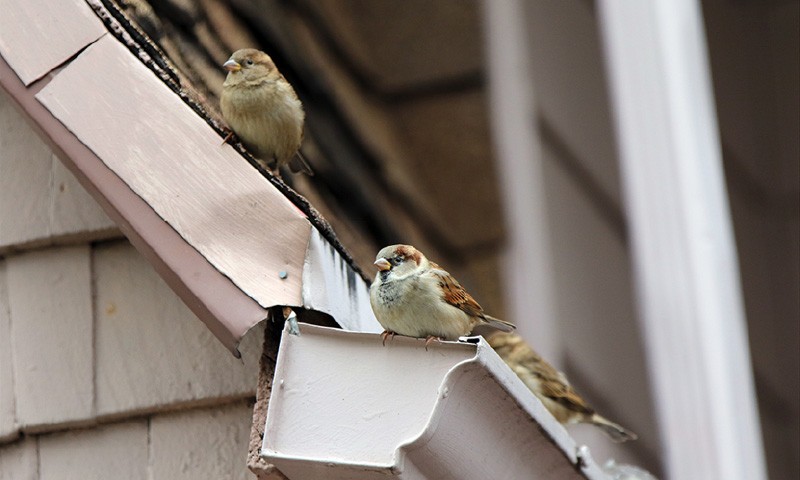Blackbirds are among the most common songbirds found in human proximity. No wonder that sometimes you find a blackbird chick while walking. When and how the young bird needs your help, read this article.
To the point
- Blackbird chicks leave the nest after 13 to 15 days
- at this time almost completely feathered
- are still fed by the parents
- do not take them with you, but wait for the return of the parents
- put uninjured nestlings back into the blackbird nest
Contents
Proper help for blackbird chicks
If you find a young blackbird that is almost fully feathered and squatting on the ground, don’t take it right away. The likelihood that the chick has actually been abandoned by its parents is very low. Instead, it is most likely a so-called branchling that has already left the blackbird’s nest. Branchlings
- are almost completely feathered
- wear the brown juvenile plumage typical of blackbirds
- usually sit on the ground
- are often well hidden, for example in bushes
- seem almost trusting to humans
- undertake first flight attempts
- are still dependent on feeding by their parents

Observe the fledgling(s) for at least one, preferably two hours from a slightly more distant vantage point hidden from your view. The parent birds are foraging and will seek out their offspring for feeding within this time period. When you approach the adults, the young make themselves known by loud calling and active behavior. These young orioles are well cared for and do not need your help.
Abandoned young
The situation is different if the blackbird chick or chicks have actually been abandoned. This can actually happen, perhaps because the parent chicks fell victim to an accident or a cat while foraging. However, since you cannot estimate this with certainty after an hour or two of observation – after all, the parent bird may have already noticed you and therefore not approach – you should wait a bit longer. Young blackbirds at this stage of development will survive about a day without water or food. If they continue to be fed by their parents, they will appear healthy and have shiny eyes.
When to intervene?
If they are not fed, however, the bird will show signs of this: Plumage and eyes appear dull and it becomes weaker and weaker. In this case:
- put on tight gloves
- use a towel as a substitute
- put the young bird in a cardboard box prepared with air holes
- feed with worms (e.g. mealworms from the pet shop)
- give some water with a pipette
- contact a veterinarian specialized in wild birds
- alternatively contact the local wild animal sanctuary
Note: Where there is one orphaned young, there are sure to be others perching nearby. Young fledglings do not all perch in one spot, but spread out within a radius of about 20 meters.
Nestling
However, if the blackbird chick you found has little or no feathers and cannot yet stand on its own two feet, it has probably actually fallen out of the bird’s nest. But even in this case, you don’t necessarily have to take it home and raise it by hand – in fact, hand rearing is the worst of all options. Instead, you should look where the blackbird’s nest is located and put the young bird – if it is unharmed – back inside.
When doing this, make sure that the adult birds are not in the vicinity and are watching you! There is a high probability that they will continue to feed their young afterwards. Under no circumstances, however, should you place blackbird chicks in an unfamiliar bird’s nest, possibly of another bird species. This only works for some bird species, but a blackbird usually notices foreign chicks and throws them out again.
Note: You can easily touch the chick without gloves. Birds do not perceive “human smell” and simply continue to feed the chick.
Hand rearing
So-called hand rearing is the last option and is only considered when all others have been exhausted – the parent birds have actually not come back or (when a nestling is found) the nest is destroyed. Raising a blackbird chick by hand is tedious and also not very promising:
- Feed young nestlings every 30 to 45 minutes during the day.
- from the age of 13 to 15 days, feed every one to two hours.
- line the box with kitchen paper
- change the paper several times a day
- do not use hay or straw
- may contain pathogens
- may make the bird sick
Do not seek further contact with the young blackbird outside of feeding so that you do not unnecessarily imprint it on humans. In this case, the animal could no longer be released or would have little chance of survival in the wild.
Frequently asked questions
What to do if you find an abandoned blackbird nest with eggs?
The same applies to blackbird eggs as to chicks: first you should observe whether the bird parents have actually abandoned the two to five bluish eggs – the blackbird mother does not breed continuously, but flies out occasionally to forage. Otherwise, wild bird eggs are difficult to hatch artificially and the young hatched from them are not easy to raise. For a layman, this task is almost impossible, especially since you do not know how long the clutch has been unhatched.
What do you feed a blackbird chick?
Young blackbirds initially eat only animal food. You can offer a nestling mainly worms. Later, berries and fleshy fruits – for example, currants or cherries – are added.
What to do if the young bird is injured?
Do not put a nestling back in the nest, even if it is only slightly injured, but take it to a veterinarian specializing in wild birds, if possible. An injured young blackbird is sure to suffer permanent damage that will make it difficult for it to survive. Therefore, injuries should be healed and then hand-raised.







